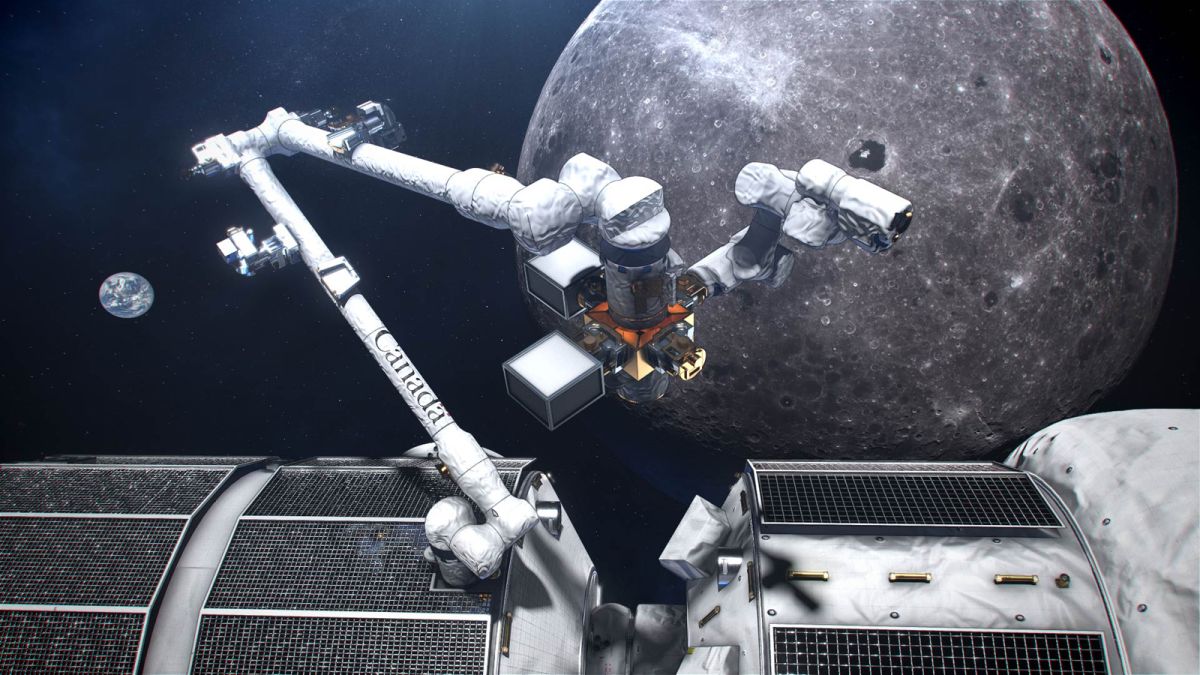
www.space.com
Artemis 2's Canadian astronaut got their moon mission seat with 'potato salad'
It took four years of negotiations for Canada to get a seat aboard Artemis 2, which will send four astronauts around the moon in 2024. Here's how it happened.
Science & Tech
It took four years of negotations for Canada to get a seat on NASA's upcoming moon mission.
That mission, Artemis 2, will send a Canadian and three Americans around the moon no sooner than November 2024. The Canadian seat comes courtesy of a big contribution to NASA's Artemis program: Canadarm3, a robotic arm that will service the planned Gateway moon-orbiting space station. (The identities of the Artemis 2 crewmembers are currently unknown but will be revealed on Monday, April 3, in a live NASA event that you can watch here at Space.com.)
Canadarm3 was announced in 2019 as part of a big push in Canadian federal government circles to reprioritize space exploration. The government pledged US $1.56 billion USD in space spending over 24 years ($2.05 billion CAD under 2019 exchange rates). That's $65 million USD a year, a fairly significant amount for a space agency that specializes in niche projects.
Much of that Canadian Space Agency (CSA) money was for Canadarm3, but some was also earmarked for a business incubator known as the Lunar Exploration Acceleration Program (LEAP). Other support went to food and health tech development contests designed to assist future deep space astronauts.
Getting all that funding and securing a seat on Artemis 2, however, took four years of behind-the-scenes negotiations. To introduce what happened, let's talk about something that may not sound all that space-y at first: potato salad.
Canada is a powerful tech specialist that has been supplying highly capable space robotics since 1981 — Canadarm for the space shuttle program; Canadarm2 for the International Space Station (ISS), along with a "handy robot" named Dextre; and Canadarm3, which will be built by the company MDA. These are all crucial tools used for applications such as spacewalking, satellite repairs and space station servicing.
Ken Podwalski, a senior CSA official involved with the Artemis 2 and Gateway negotiations, likens the reputation of Canada's space robotics to the dinner guest who comes armed with a divine side dish: "People look at Canada and say, 'Canada, you guys make the best potato salad, bar none. It's the best potato salad you can get. Nobody does it like you.'"
His confidence comes from decades of space experience. NASA's Hubble Space Telescope, for example, would not be running today without Canadarm, which was used on five space shuttle servicing missions to the iconic observatory from 1993 to 2009. Nor would the ISS exist in its current form without Canadarm2, which berths cargo ships, assists in construction and even starred in a spectacular 2007 emergency spacewalk to fix a torn ISS solar panel.
But in 2015, when the future of the ISS collaboration was being discussed within Canada, the U.S. and other nations, there were lots of questions about what would happen next. Canada was just changing over from a Conservative to a Liberal government for the first time in nearly a decade, following the 2015 election.
The U.S. was on the eve of the 2016 election, which brought in a new presidential administration as well. Numerous ideas were batted about concerning the direction of NASA's human spaceflight program over the coming years. Would the agency work toward a crewed visit to an asteroid? A moon mission? How quickly and with whom? And within Canada, no space plan for government spending direction had been formulated for many years, making roadmaps similarly uncertain — until a high-level strategy document came out in 2019.
The multinational space groups Canada is a part of all agreed on one thing, Podwalski said: Mars was the ultimate destination. The question simply came down to which pathway to take. The CSA created its own planning group that used the ISS agreements as a starting point. Gateway, though changing design and scope periodically, was a solid enough target to plan discussions with NASA during the 2015 to 2018 negotiations, he said.
"We were going through this quite intensive time. We were doing presentations with the partners and trying to understand what the right fit was," Podwalski recalled. "We were [also] doing presentations with our government, trying to make sure that we're taking the right approach."
























































